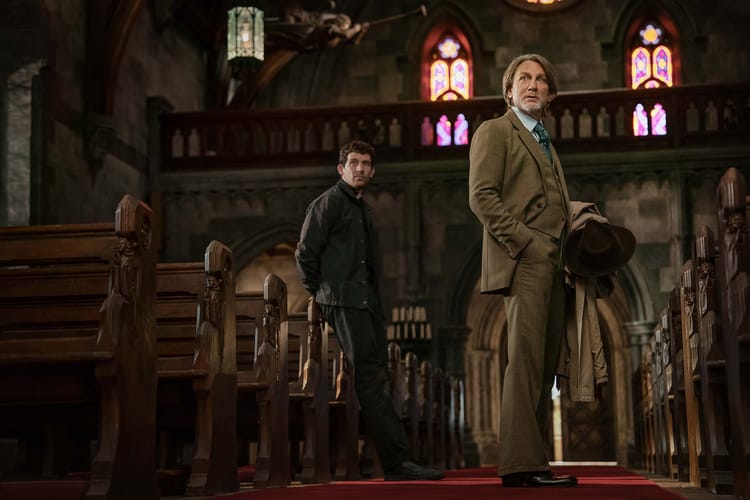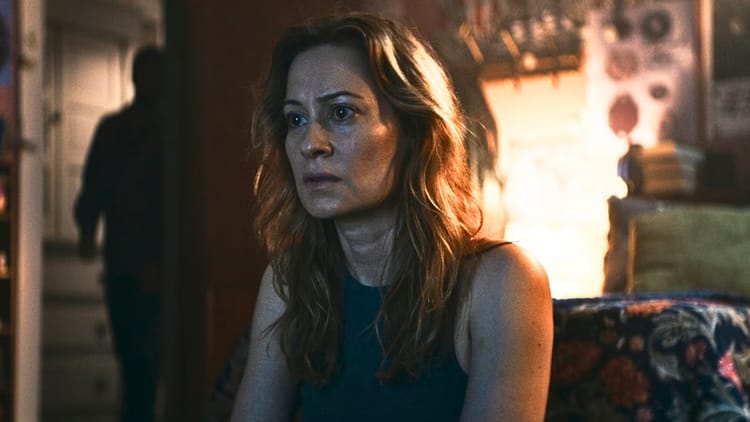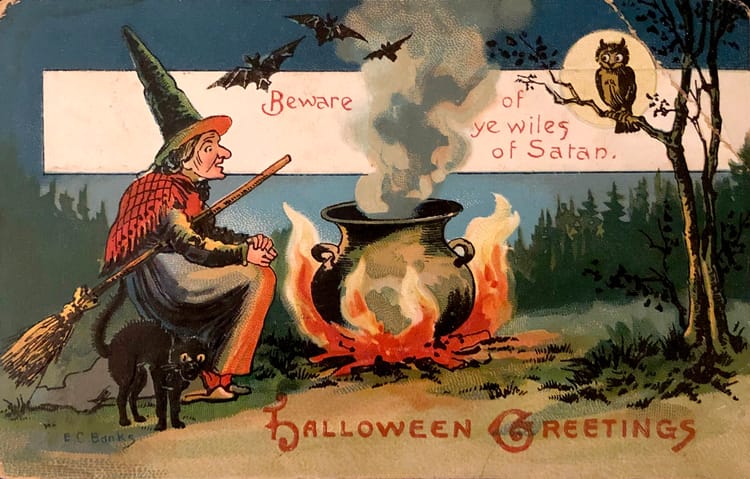Retribution, restoration, and Batman

(I am traveling this weekend, so the Cowboy Bebop finale post will be up later this week. In the meantime, here's a great piece by Jenna Dorn on the conflict between vengeance and renewal in the Batman mythos. — ed.)
In the final act of The Batman, director Matt Reeves's 2022 take on the venerable superhero detective, the sea wall surrounding Gotham City comes tumbling down, flooding the dingy metropolis. Batman (here played by Robert Pattinson) realizes that saving the day may mean something other than punishing a supervillain. Yet as he leads people out of the darkness, a single flare held aloft, it's not hard to see what might come after the flood as a chance to build something new. And the dichotomy between creating actual change and simply renewing broken systems lies at the core of Reeves's film.
In the film, "Renewal" is the name of a massive fund that Thomas Wayne (Bruce’s father) donated to the city to rebuild Gotham’s infrastructure. Following Thomas Wayne’s murder, however, organized crime, namely crime boss Carmine Falcone (John Turturro), pounced on the unregulated fund. Falcone, unbeknownst to the public, installed a puppet regime by way of sham Renewal projects that achieved nothing other than lining the pockets of corrupt officials, his friends, and himself. This discontinuity between Thomas Wayne's stated ambitions and his ultimate legacy underscores the ambivalence of “renewal” as a political doctrine and benchmark of progress.
Within The Batman’s universe, renewal is presented as something akin to reform. Yet as it pretends to offer “real change,” renewal mostly reconfigures the existing apparatuses that perpetuate inequity. The film displays this idea via the existence of The Riddler (Paul Dano), a former child orphan whose grievances against the city's power structure turn violent. The socioeconomic disparities intensified by The Renewal Fund provoke Riddler’s crusade against Gotham’s institutions. “Renewal is a lie,” he says.
Riddler and Batman represent two sides of the same coin. Both are disaffected vigilantes who execute their contrasting notions of vengeance outside the parameters of the law. Batman may tell criminals that he is vengeance personified, but so is The Riddler. They just have different targets.
The film’s exploration of renewal (in all its forms) embraces the Batman canon’s most seminal theme: the mutual exclusivity of justice and corruption. In Gotham, nefarious politicians infiltrate weak institutions, thereby corrupting the society and psyches of people for whom these institutions were ostensibly designed to serve. (Voíla, you have your villain.)
The Batman isn’t the first adaptation to closely scrutinize this system of social control, though. The politics of its acclaimed animated predecessor, Batman: The Animated Series, which ran from 1992 to 1995, are readily apparent in the 2022 film. Like The Batman, the animated series interrogates Bruce Wayne’s relationship to Gotham’s forces of corruption, upending the sociopolitical binaries that villainize the city’s underclass while lionizing its sanctioned ringleaders.
Batman's actualization as Vengeance personified in The Batman mirrors the self-discovery he experiences in "Nothing to Fear," a 1992 episode of the neo-noir series. The episode cross-examines Bruce’s ego and alter-ego when Batman tries to stop the Scarecrow from plundering Gotham University’s funds to pursue his own revenge. The Scarecrow subsequently stupefies Batman with a hallucinogenic gas that produces a nightmarish apparition of Thomas Wayne condemning his son as a failure. After several spooky murmurs of “Bruuuuuuce,” Bruce’s simmering rage galvanizes him to reject his dad’s assessment, and he declares, “I’m Vengeance!"

This scene underscores the true nature of Batman’s intentions. He isn’t driven to masked vigilantism through a sense of righteousness but through a compulsion for retribution. He longs to avenge his parents’ murder by fighting the sordid people and conditions that enabled it. Gotham’s insidious power structures robbed Bruce of his childhood. He lost his innocence, psyche, and sense of belonging in a world devoid of love and mercy from that moment on. Yet what about us? If our heroes synonymize justice with vengeance, how do we conceptualize anything beyond that?
When a legal system practices retributive justice, it maintains that those who commit crimes morally deserve to suffer a proportionate punishment decided by the penal code, as described in the Stanford Encyclopedia of Philosophy. In Gotham, but also in our world, justice is only an illusion of fairness, one veiled by profligate political officials who ultimately deliver a respectable face for organized crime lords (and/or corporations) to rule beneath and exact vengeance when their authority is questioned. Due to moral absolutes like “hero” and “villain” being laden with these contradictions, true justice is an impossibility.
A different Batman mainstay explores this duality with even more complexity. Within the animated series, Harvey Dent stands in for Gotham’s duplicitous legal institutions (and, by extension, America’s real-life retributive justice system). Being District Attorney, Harvey is one of the justice system’s foundational pillars, though he also becomes one of its casualties.
In the first season, Harvey develops a romance with botanist Dr. Pamela Isley, AKA Poison Ivy. She poisons him with a kiss of lethal serum from a plant that went extinct due to the construction of a new prison that Harvey spearheaded. When the police fail to find the person responsible for Harvey’s poisoning, Batman identifies Poison Ivy and has her arrested. While Harvey is technically one of the revered Good Guys at this point, his commitment to punishing lawbreakers literally kills the environment and people’s livelihoods. Poison Ivy alleges that Harvey is a murderer, but political mores deem otherwise. Likewise, Batman’s vigilantism is exonerated because his vision of justice aligns with state-sanctioned vengeance, while Poison Ivy’s is considered evil.
As the series continues, Harvey consistently struggles to achieve institutional justice by the code. When he turns his attention toward the potential arrest of Crime Boss Rupert Thorne to boost his reelection campaign, judicial bureaucracy impedes Harvey, and he is left to pursue Thorne on illegitimate terms. Despite Thorne’s transgressions being well known to the public, he has been immunized from legal repercussions thanks to the corruption pervading Gotham’s justice system. And in that pursuit, Harvey's darkness fully emerges.
As you likely know, Harvey is tormented by a Jekyll-Hyde-esque psyche, resulting from severe emotional repression following a fit of rage that child Harvey unleashed on a bully. As a single psychotherapy session will reveal, repression does not eradicate unpleasant feelings but hyper-pressurizes them until the floodgates are rammed open, creating something far more insidious and destructive.
Inside Harvey, this breach spawns an antagonistic persona that aggressively contradicts his tactful affect. When Rupert Thorne retaliates against Harvey’s manhunt by stealing his professionally compromising psychiatric file, the alternate persona “Big Bad Harv” emerges. While attacking Thorne's cronies, a freakish explosion vaporizes the entire left side of Big Bad Harv (and thus, Harvey himself), leaving nothing but patchy flesh and bare bone. The consequent trauma deepens his emotional schism, allowing Big Bad Harv to take command as a vindictive fatalist, agnostic to the prescriptions of right and wrong.

Harvey’s new villain identity assumes the name Two-Face, per the two-headed coin in his pocket during the explosion. Utterly intent on destroying Thorne, Harvey begins a bitter crime spree, guided strictly by the imposition of chance per his coin. If the unscathed face turns face up, Harvey offers mercy to his victim, while the scratched face obligates him to inflict harm. For as awful as Two-Face can be, the series argues that Harvey’s new moral compass is no more arbitrary than the punitive stipulations imposed by the judicial system and prosecutors like himself. Punishment is deemed “just” if it’s systematized, and it is deemed vengeance if the sought-after restitution is not. Harvey’s two-facedness is not just a metaphor for political hypocrisy but also for another recurring theme in the Batman universe: Every human being is as capable of good as they are bad, but no person is entirely the former or latter. Depending on the circumstances, either end of this spectrum can manifest in a person.
Bruce’s own selfhood is progressively undermined in the 2022 film. Late in the movie, he discovers a moral transgression made by his late father during the latter’s political career. When Bruce confronts the ever-loyal butler Alfred (Andy Serkis) about this dishonorable behavior in question, he learns that it is partly true. The elder Wayne had indeed bargained a deal with crime boss Carmine Falcone to protect a secret about Bruce’s mother that leaked to the press. Alfred contends that his father did not agree to the lengths Falcone took to preserve Mrs. Wayne’s secret (so, murder). Nonetheless, Bruce is heartbroken that his father even approached Falcone.
“I thought my father was a good man,” Bruce says.
To which Alfred says: “He was a good man!”
Bemoaning a questionable choice made by someone we revere is counterproductive. No matter how heroic of a life they’ve led, not a single person on this planet is entirely devoid of poor decisions. “Good” and “bad” are hollow descriptors society is conditioned to take as absolutes. A natural extension of that idea is to advocate for punishment as a deterrent to future “bad” behavior. Therefore, a society that believes in moral absolutes inevitably becomes a vengeful one, in which rehabilitation, restoration, and forgiveness are considered too merciful as opposed to being considered humane.
An absolutist idea of “good” and “bad” shapes us to believe that it’s inexcusable to fuck up, that we are undeserving if we do so, and that growth is not possible and thus is unnecessary to strive for. Punishment does not teach us to do better but to control ourselves, suppress urges, and not make the same mistake again. Don’t get me wrong, I can think of several people who do not even remotely resemble “good.” Still, the betterment of society depends on our acknowledgment of any individual’s potential for change, a step beyond renewal.
Suppose we believe in a person’s potential and that each individual is capable of compassion and goodness. In that case, holding someone accountable for acting with a lack thereof is more advantageous. Holding someone accountable isn’t punishment. Instead, it recognizes the individual’s capacity to repair and transform. In the 2022 film, as well as the animated series, circumstances like poverty or the loss of parents will inevitably drive someone to acts of desperation. For the arbiters of justice to recognize the source culprit, however, would require a sense of accountability fundamentally incompatible with the beliefs they espouse. Childhood Harvey punished himself by repressing his emotions and only endured greater harm because of it. Caging the manifestations of harm, whether that cage is external or internal, whether self-inflicted or forced, is analogous to vengeance.
If retribution is defined by the imposition of punishment, what is it but state-sanctioned vengeance? According to the aforementioned Stanford Encyclopedia of Philosophy, one of the prospective goals of a punitive system is to channel the retributive sentiments of the public into the political and legal systems to deter people from disaffectment, lynching, blood feuds, and other forms of vigilantism. Nonetheless, our hero in the Batman canon is a vigilante. By the end of Harvey’s two-part episode, Rupert Thorne lures Two-Face into a trap that renders both he and Thorne somewhat vulnerable in a final confrontation. When Two-Face tosses his coin of fate, Batman at last intervenes by throwing a box of silver dollars in the air, rendering Two-Face's coin unidentifiable and Thorne unaccountable. When in doubt, determine the verdict by hurling some money at the problem.

Behind the mask of punitive justice is vengeance. Batman being a self-proclaimed figure of vengeance is itself a paradox, an excoriation of political institutions that do not protect all of the people but instead punish them, even as they simultaneously practice the same retributive approach.
When Batman unmasks one of Riddler's newly recruited goons in the 2022 film's final moments, that goon also identifies himself as “Vengeance.” The moment underscores Bruce’s culpability. His crusade is indifferent to the corruption that pervades high places while targeting the individuals most vulnerable to it. Vengeance is a function of tyranny, and society will only cease to be scourged by violence if the conditions allowing for it aren’t renewed but abolished.
Episodes is published twice per week. Mondays alternate between a free edition on various topics and a subscriber-supported edition where I recap TV shows of interest. Fridays offer pop culture thoughts from freelance writers. The Friday edition and the biweekly recaps are only available to subscribers. Suggest topics for future installments via email or on Twitter. Read more of my work at Vox.





Member discussion